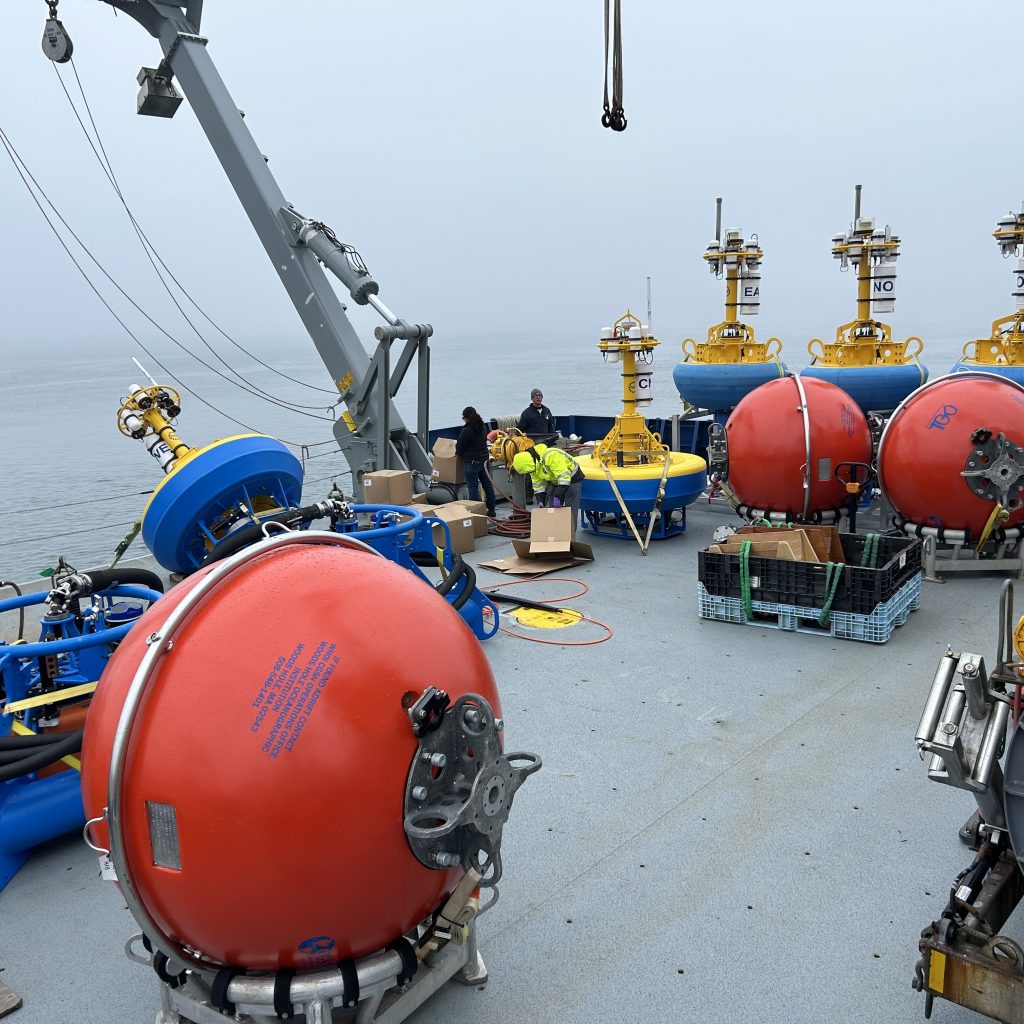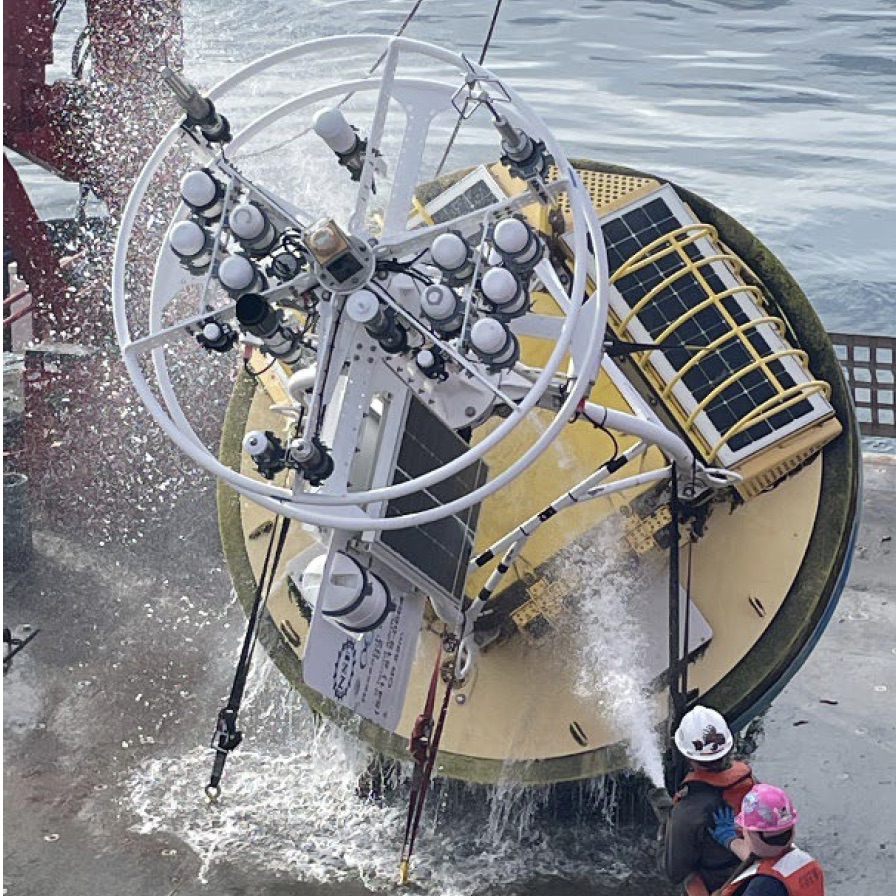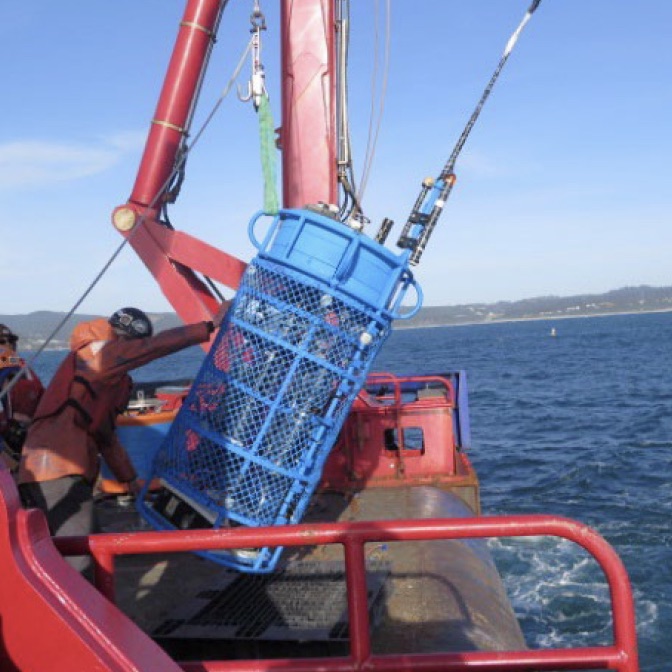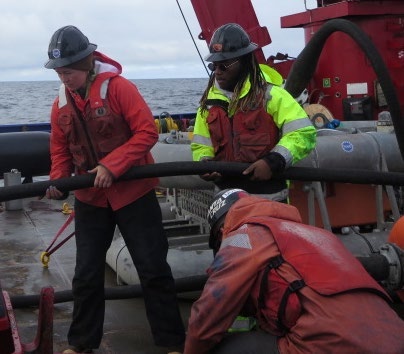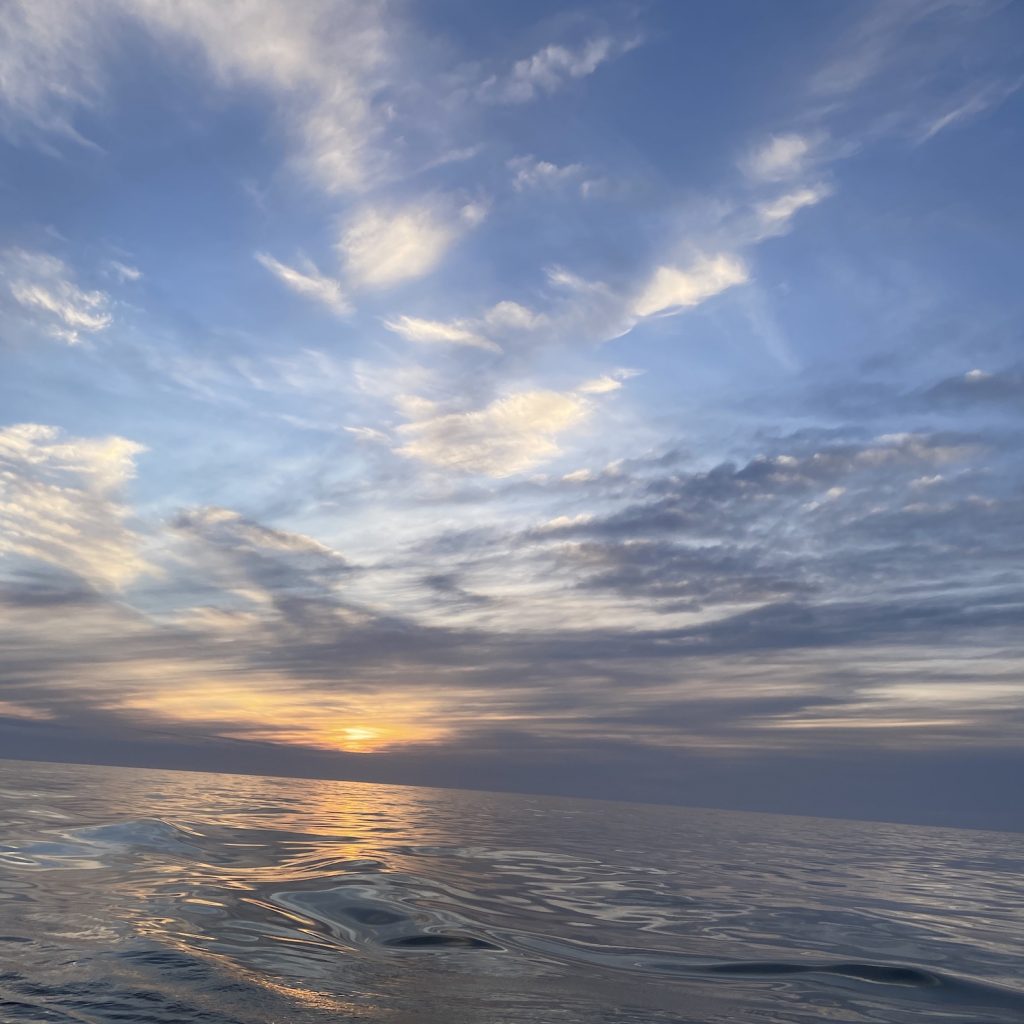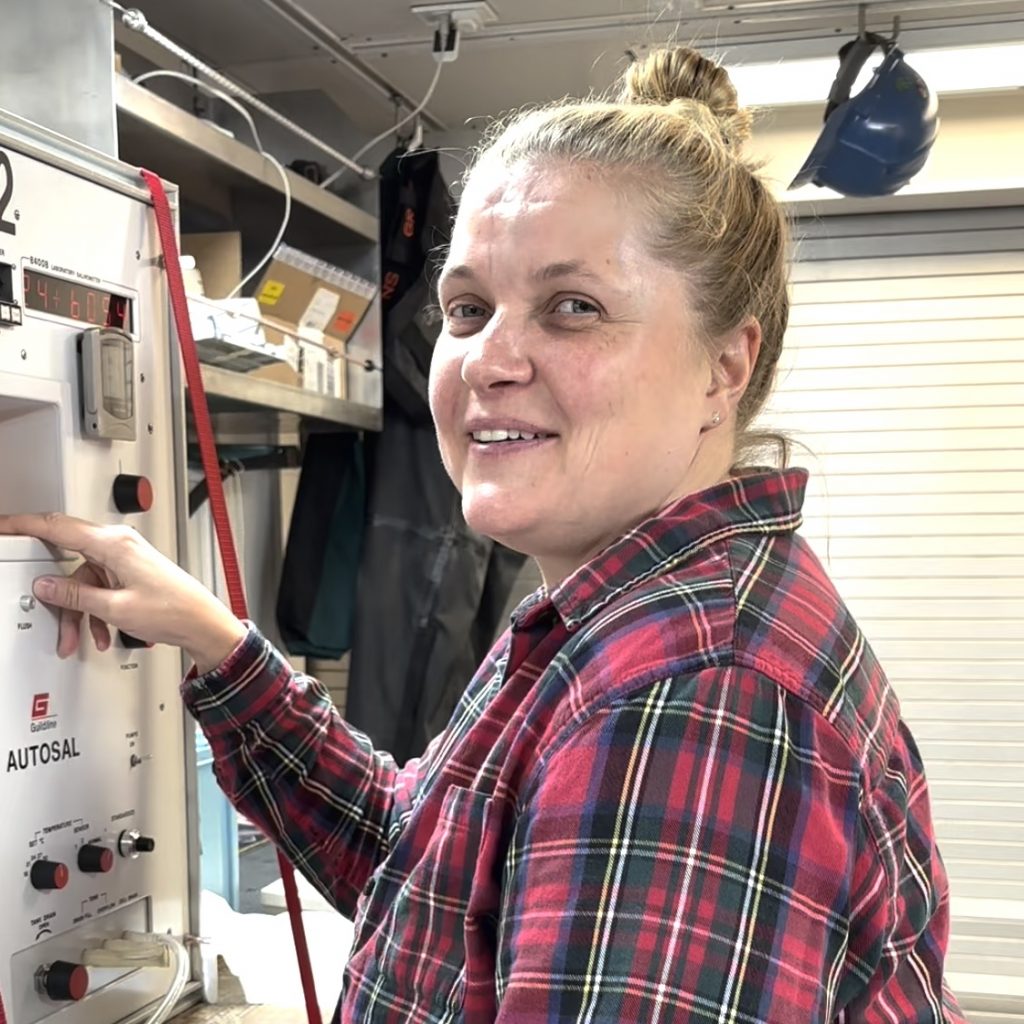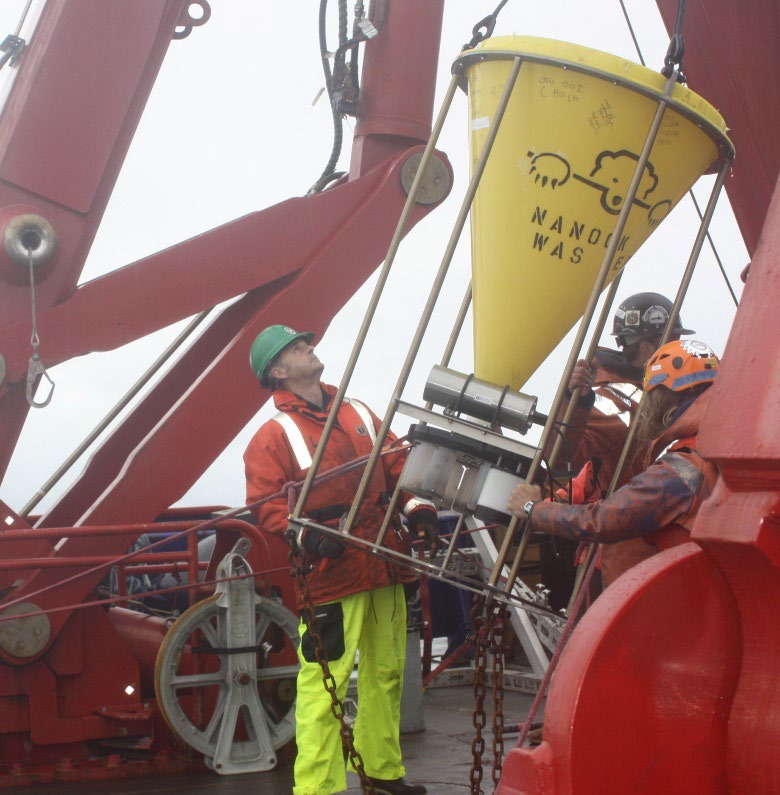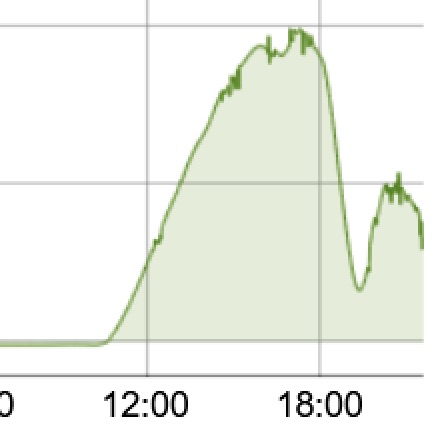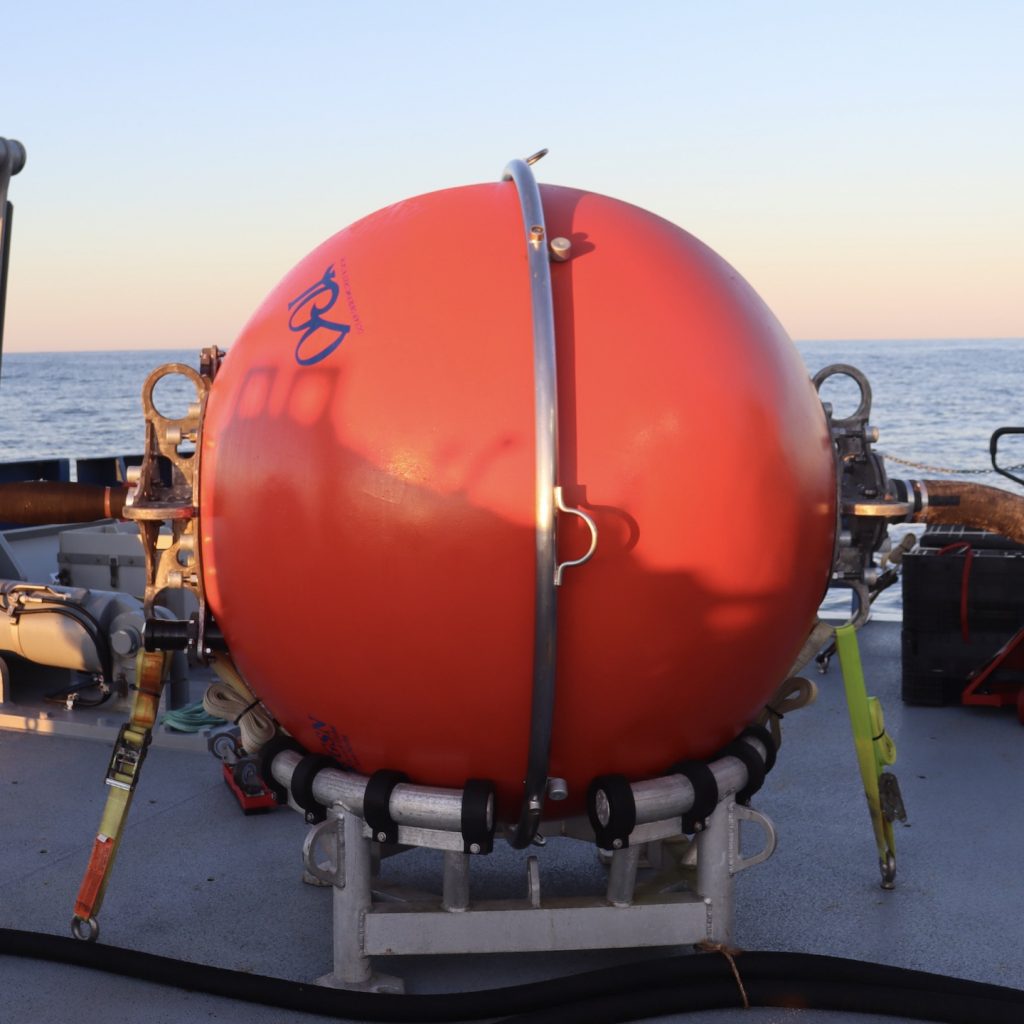Updates
Sunset Departure
The R/V Neil Armstrong departs Woods Hole, MA headed to Pioneer MAB on Leg#2.
Read MoreReady for Leg 2
Remaining Coastal Profiler Moorings and the brand new Shallow Water Moorings loaded on the R/V Neil Armstrong for deployment during leg 2. Staged and ready. All components of the new MAB shallow water mooring are assembled on deck to facilitate testing before deployment tomorrow.
Read MoreDissuading Pesky Sea Lions
California sea-lions haul out on Endurance Array shelf buoys during the day. These buoys ride higher at night, which corresponds to when the sea-lions leave to feed. Aluminum guards keep the sea-lions off the solar panels and prevent sea-lions from chewing wires and connectors. The team sprayed off biofouling after getting the buoy on board.
Read MoreCoastal Piercing Profiler Deployment
A Coastal Surface Piercing Profiler is headed overboard. In the background is the Oregon Inshore Surface Mooring 150 meters away. They are deployed near each other so the Endurance 20 team can command the profiler while it is underwater. There is a cellular connection with the surface mooring. The mooring and the profiler each have…
Read MoreUNOLS Volunteers Leg 2
On this cruise leg, the two UNOLS Cruise Volunteers who joined the Endurance 20 team are graduate students Malik Jordan and Ellery Ohlwiler. Here they are guiding stretch hose into the ocean behind a buoy. Behind them is the MultiFunction Node of this mooring, which includes its anchor.
Read MoreThanks to @RV_Neil Crew
We are almost home. We are aboard the R/V Neil Armstrong off the coast of Martha’s Vineyard, waiting for the tide to change so we can safely make our way to the WHOI dock. This successful leg 1 would not have been possible without the extreme professionalism and friendliness of the R/V Neil Armstrong crew. …
Read MoreAnd It’s a Wrap
Hear what the best parts of leg 1 were from some of its participants. The Coastal Pioneer Array MAB team completed all the objectives of Leg 1 by the end of the day April 8th and started the transit home, back to the dock at Woods Hole. Taking advantage of a day in the wet…
Read MoreSediment Traps Day
The Endurance 20 team’s main effort today was to turn a sediment trap mooring. The project is led by professors Jennifer Fehrenbacher (Oregon State University) and Claudia Benitez-Nelson (University of South Carolina). Their team is collecting foraminifera, single-celled plankton, and they are using OOI data to interpret their samples. On the ship with the team…
Read MoreRadiometer Captures Eclipse
The radiometer (light sensor) on the R/V Neil Armstrong’s bow mast sensed the partial eclipse. Sunday 4/7 was a pretty clear day. The radiation increases relatively smoothly towards midday (16:00 UTC is local noon), peaking near 1000 watts per square meter, and then drops off again. Today (4/8) was a very clear, no clouds in…
Read MoreProfiler Moorings Today
High seas are forecast at the end of the week when leg 2 was set to be on site at the new Pioneer location in the Mid-Atlantic Bight. Taking advantage of sunny skies and smooth seas, leg 1 was extended to deploy two coastal profiler moorings. The Pioneer Team successfully deployed two profilers moorings today,…
Read More
